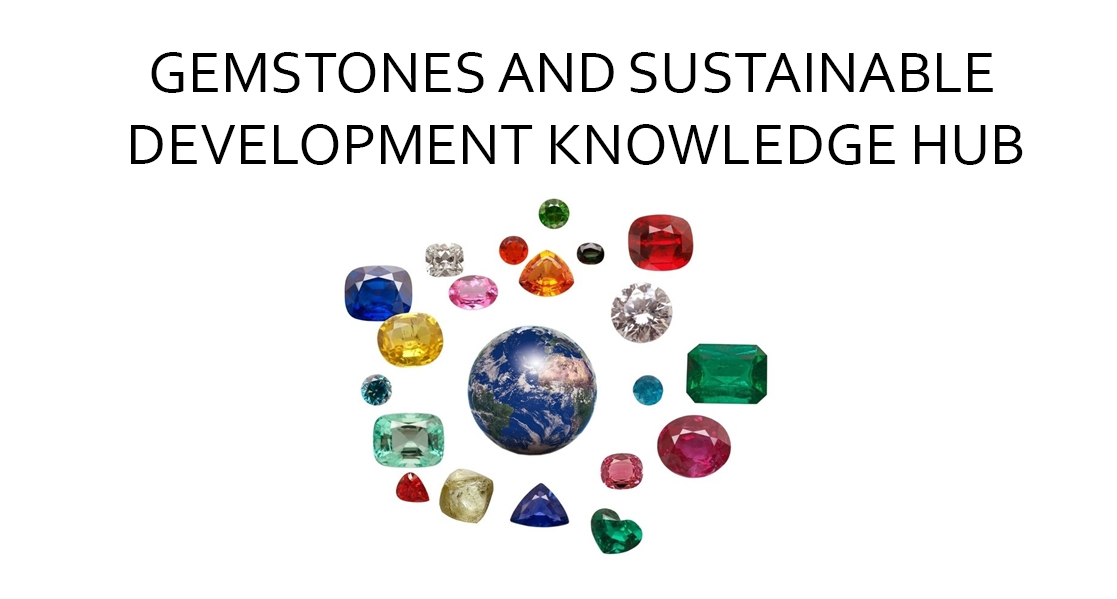By Dr. Muhammad Makki
September 21st, 2017
The magnificent Valley of Swat, surrounded by majestic mountains, contains an absolute corn bright in it. The Valley also holds one of the Asia’s largest deposits of emeralds. Similar to Colombian emerald, Swat emerald is well known for its unique green colors (ranging from medium to deep green) and for its distinctive smoothness and transparency.
The emerald mine of Swat was first discovered in 1958 - the era of Wali-e-Swat, Prince Miangul Jahanzeb (the princely Swat State) - and became the livelihood of thousands during that time. Later, in 1968, the mine became the property of the Government of Pakistan (following the independence of Pakistan in 1947 when the princely state was acceded to Pakistan). According to an estimate, during the 1980s, the mine of Swat yielded around a quarter of a million carats of emerald, a value close to fifteen million British pounds. According to the Assistant Director of the Mineral Development Department, the mine remained “officially” non-operational between 1998 and 2010.
The valley of Swat also remained a battleground against Tehreek-e-Taliban Pakistan (TTP) which had full control of Swat by 2007. TTP literally ripped the socio-cultural and historical fabric of Swat. Cultural vandalism was well evident through the destruction of Buddhist archaeological sites. The thriving tourist industry was completely dismantled, and a ruthless destruction of the pine forests, that blanketed the whole Malakand district, began. The famous ‘Green Square’ was redefined as Khoonee Chowk (the Bloody Square), regularly presenting beheaded and mutilated bodies. Indeed, TTP threaded the terror and dread deep into the conduct of daily life of the region once known as ‘The Switzerland of Pakistan’.
When TTP consolidated control in Swat, they as well, or as horribly, tried to tear the emerald mine from its roots; sullied it; poisoned it; and finally chocked it. Massive illegal extraction and trading of the precious stone were carried out. Our research indicates that TTP used the emerald revenue to fuel its kinetic agenda in Pakistan and Afghanistan. In addition, we have revealed that the local gemstone industry has spent a considerable part of its dividends in sponsoring militancy and Talibanisation. During the TTP’s tyranny and unhindered looting of the mine, the Swat emerald was dubbed as ‘the blood emerald’—a tabooed brand name. The mine was so deeply abused and broken by TTP that it never quite recovered from the damage caused by inappropriately employed methods of extraction.
Despite its (il)legal exploitation since 1958, the mine still remains young and strong. The mine has been re-leased in 2010 to a local contractor for a period of ten years. According to a recent estimate, the Fizza Ghat Mine of Swat contains approximately seventy million carats of emerald. The current lust for emerald pushes more than 1000 miners to dig deeper and deeper. However, the profoundest tragedy for it is that it has never succeeded to gain a considerable attention or recognition.
Why did not we accept and acknowledge its existence, its brilliance and courage?! Why did not we recognize the botched mind that has occupied it so far and committed to starve the mine?! Why has there been no affirmative policy to address the issues of skilled labor and technology as well as the overall ‘beneficiation’ process?! Why did we allow it to fall into decadence, being disinherited and neglected?! Such questions are blazoned over every entrance of the tunnels of the mine. One can observe that the Swat emerald is pushing its roots everywhere only to breathe the air and feel the sun, a well-deserved struggle for its recognition; identity; growth; and internalization.
Our preliminary research indicates that the gemstone industry in Swat is unstructured, and there is no control or organization concerning the emerald flow—the supply chain—hence bringing in meager revenues to the local community. The local gemstone traders supply the rough emerald to the international buyers in India, Dubai, and Thailand. The lack of skilled labor coupled with unavailability of advanced extraction machinery/techniques and polishing have rendered the industry obsolete in Swat. Many respondents shared their concerns over how the identity of Swat emerald is being altered in the international market. These points to the significance of branding the Swat emerald and (re-)claiming its identity.
Peace has now returned to Swat after the TTP were driven out of the valley; thanks to military operations. The restored peace is indeed reviving the tourism industry. We must also further advance down the road of peace where the Swat emerald can play its role towards positive developmental outcomes. In brief, there must be a real world for the Swat emerald and we must give its (a well-deserved) identity to prove itself ‘decent’ and competitive across the international market.
The author gratefully acknowledge the financial support for the fieldwork received from the ‘The Gemstone Knowledge Hub’ at the University of Delaware, USA.
"Author’s grateful thanks are also extended to research assistance received from Faryal Khan, Waseem Iftikhar and Aiezah Azam".
The blog was edited by Mehmet Altingoz





